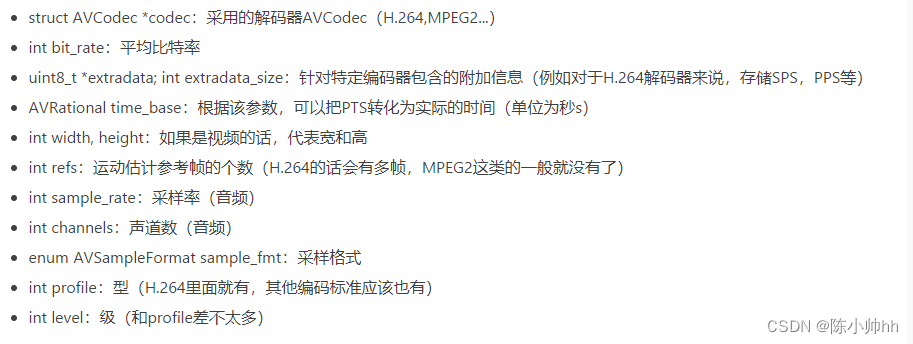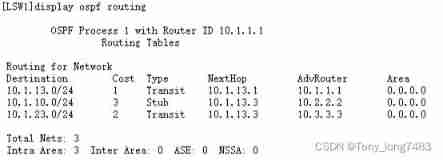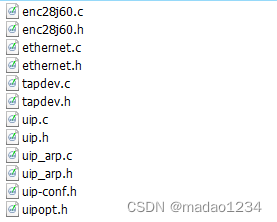当前位置:网站首页>Single source shortest path exercise (I)
Single source shortest path exercise (I)
2022-07-06 00:15:00 【rikka-l】
Single source shortest path exercise
Single source shortest path mapping method
Heat Wave
Topic link : Heat Wave
analysis : A more naked question , Directly build drawings and then set templates , I'll just use spfa The water has passed .
Code implementation :
#include<iostream>
#include<queue>
#include<cstring>
using namespace std;
const int N=2510,M=12410;
int n,m,str,ed;
int dist[N];
int h[N],e[M],ne[M],idx=1,w[M];// Chained forward star storage graph
bool st[N];
queue<int> q;
void add(int a,int b,int c){
e[idx]=b,ne[idx]=h[a],w[idx]=c,h[a]=idx++;
}
void spfa(){
memset(dist,0x3f,sizeof dist);
dist[str]=0;
q.push(str);
st[str]=1;
while(q.size()){
auto t=q.front();
q.pop();
st[t]=0;
for(int i=h[t];i;i=ne[i]){
int j=e[i];
if(dist[j]>dist[t]+w[i]){
dist[j]=dist[t]+w[i];
if(!st[j]) q.push(j),st[j]=1;// here st[j] It's good to remove it , But it will be less efficient
}
}
}
}
int main(){
cin>>n>>m>>str>>ed;
for(int i=1;i<=m;i++){
int a,b,c;
cin>>a>>b>>c;
add(a,b,c);
add(b,a,c);
}
spfa();
cout<<dist[ed]<<endl;
return 0;
}
messenger
Topic link : messenger
analysis : For this question , We found that , For addition 1 Every point outside , The shortest time required for communication is 1 The shortest distance to this point , And the time when all points complete the communication is when all points arrive 1( except 1 Outside ) The maximum value in the shortest circuit of , So we just need to 1 To all points ( except 1 Outside ) The shortest circuit of .
Code implementation :
#include<iostream>
#include<cstring>
using namespace std;
const int INF=0x3f3f3f3f;
int n,m;
const int N=110;
int g[N][N];
int main(){
cin>>n>>m;
memset(g,0x3f,sizeof g);
// Here we don't need to initialize g[i][i] by 0, Therefore, it will not be used when updating , It's also right to update without this status
while(m--){
int a,b,c;
cin>>a>>b>>c;
g[a][b]=g[b][a]=min(g[a][b],c);// Prevent multiple edges
}
for(int k=1;k<=n;k++)
for(int i=1;i<=n;i++)
for(int j=1;j<=n;j++)
g[i][j]=min(g[i][j],g[i][k]+g[k][j]);
int res=0;
for(int i=2;i<=n;i++)// Attention from 2 Start , If from 1 Start , Because we didn't put g[1][1] Initialize to 0, Can cause errors
if(g[1][i]==INF) {
res=-1;
break;
}
else res=max(res,g[1][i]);
cout<<res;
return 0;
}
Sweet butter
Topic link : Sweet butter
analysis : For this question , We can enumerate every pasture to put sugar , Then find out the shortest path from this pasture to all other pastures , Then enumerate the pastures of each cow , Find these distances and choose the smallest one . If you go directly to dijkstra It may time out , Here we use spfa, The author of this question has no card spfa.
Code implementation :
#include<iostream>
#include<queue>
#include<cstring>
using namespace std;
const int INF=0x3f3f3f3f;
int s,n,m,tmp;
const int N=810,M=2910;
int res=INF;
int id[N],e[M],ne[M],idx=1,h[N],w[M];
bool st[N];
int dist[N];
queue<int> q;
void add(int a,int b,int c){
e[idx]=b,ne[idx]=h[a],w[idx]=c,h[a]=idx++;
}
int spfa(int str){
memset(dist,0x3f,sizeof dist);
q.push(str);
st[str]=1;
dist[str]=0;
while(q.size()){
auto t=q.front();
q.pop();
st[t]=0;
for(int i=h[t];i;i=ne[i]){
int j=e[i];
if(dist[j]>dist[t]+w[i]){
dist[j]=dist[t]+w[i];
if(!st[j]) q.push(j),st[j]=1;
}
}
}
int ans=0;
for(int i=1;i<=s;i++)
if(dist[id[i]]==INF) return INF;// Once two pastures are disconnected , Go straight back to INF
else ans+=dist[id[i]];
return ans;
}
int main(){
cin>>s>>n>>m;
for(int i=1;i<=s;i++) cin>>id[i];// Record the pasture of each cow
while(m--){
int a,b,c;
cin>>a>>b>>c;
add(a,b,c),add(b,a,c);
}
for(int i=1;i<=n;i++) res=min(res,spfa(i));
cout<<res<<endl;
return 0;
}
Minimum cost
Topic link : Minimum cost
analysis : An interesting question , We use... Separately spfa and dijkstra Explain it once .
Let's think about it first , hypothesis A The amount of money ordered is SA, After each point, the remaining money is the original Ci times , It goes through all points to B Then there is an equation SA*C1*C2*C3......=100, We demand SA The minimum value of , Just ask that pile C The maximum value of the product of , Again because Ci Greater than 0 Less than or equal to 1, So the more multiplied, the smaller , Next we discuss two approaches .
spfa:spfa Is based on its relaxation operation , For a starting point , If we can update adjacent points through its edges ( All points are initially initialized to 0, The starting point is initialized to 1), That is the C The product of becomes smaller , Just operate and add this point to the queue , therefore spfa Find the shortest path 、 The longest way is ok .
Code implementation :
#include<iostream>
#include<queue>
using namespace std;
int n,m,A,B;
const int N=2010,M=2e5+10;
int e[M],ne[M],idx=1,h[N];
double w[M];
double dist[N];
bool st[N];
queue<int> q;
void add(int a,int b,double c){
e[idx]=b,ne[idx]=h[a],w[idx]=c,h[a]=idx++;
}
void spfa(){
dist[B]=1;
st[B]=1;
q.push(B);
while(q.size()){
auto t=q.front();
q.pop();
st[t]=0;
for(int i=h[t];i;i=ne[i]){
int j=e[i];
if(dist[j]<dist[t]*w[i]){
dist[j]=dist[t]*w[i];
if(!st[j]) q.push(j),st[j]=1;
}
}
}
}
int main(){
cin>>n>>m;
for(int i=1;i<=m;i++){
int x,y,z;
cin>>x>>y>>z;
double c=(100.0-z)/100;// Translate into... In our analysis c
add(x,y,c);
add(y,x,c);
}
cin>>A>>B;
spfa();// hold B As a starting point
printf("%.8lf",100/dist[A]);
return 0;
}
dijkstra: We know ,dijkstra It is based on greed , For the shortest path problem , Let's find the shortest distance to the end , At the beginning, it is itself , Then use it to update other points , But it cannot solve the longest path problem ( I won't prove it here ,《 Introduction to algorithms 》 There should be ), And for us, the most demanding C, We find the biggest one every time C To update , At the beginning, it is also itself , Then use a similar method to update , We found that it can also AC.( Here I have a guess ,dijkstra The reason why we can't find the longest way is that the nearest one to the end is not the end itself .) Prove concretely that I really won't , I'm too fond of vegetables. , Left tears of frustration .
Code implementation :( I don't want to write anymore , Just stick it y All in all )
#include <iostream>
using namespace std;
const int N = 2010;
int n, m, S, T;
double g[N][N];
double dist[N];
bool st[N];
void dijkstra(){
dist[S] = 1;// The starting point is initialized to 1, Other points are 0
for (int i = 1; i <= n; i ++ ){
int t = -1;
// Find the biggest C
for (int j = 1; j <= n; j ++ )
if (!st[j] && (t == -1 || dist[t] < dist[j]))
t = j;
st[t] = true;
for (int j = 1; j <= n; j ++ )
dist[j] = max(dist[j], dist[t] * g[t][j]);// to update
}
}
int main(){
scanf("%d%d", &n, &m);
while (m -- ){
int a, b, c;
scanf("%d%d%d", &a, &b, &c);
double z = (100.0 - c) / 100;// Translate into... In our analysis C
g[a][b] = g[b][a] = max(g[a][b], z);
}
cin >> S >> T;
dijkstra();
printf("%.8lf\n", 100 / dist[T]);
return 0;
}
By the way , For this question ,dijkstra:570ms about ,spfa:242ms about .
The best ride
Topic link : The best ride
analysis : There are some skills in the construction of this problem , First , There must be many solutions to this problem ( I guess. ), Since we are the single source shortest path exercise , Let's use the single source shortest path method . For each route , The distance from the previous point to any subsequent point is set to 1, Then we find the shortest path from the beginning to the end , subtracting 1 That's the answer. ( Because once it was transferred on the same route ), But there is another special case , When the start point and the end point coincide , The shortest path is 0, subtract 1 Namely -1 了 , So we have to deal with it in a special way .
Code implementation :
// acutely , How do you feel that I wrote bfs A wave of spfa taste
#include<iostream>
#include<sstream>
#include<queue>
#include<cstring>
using namespace std;
int n,m,tmp;
const int N=510,M=25010,INF=0x3f3f3f3f;
int e[M],ne[M],idx=1,h[N];
int stop[N];
int dist[N];
queue<int> q;
void add(int a,int b){
e[idx]=b,ne[idx]=h[a],h[a]=idx++;
}
void bfs(){
memset(dist,0x3f,sizeof dist);
dist[1]=0;
q.push(1);
while(q.size()){
auto t=q.front();
q.pop();
for(int i=h[t];i;i=ne[i]){
int j=e[i];
if(dist[j]==INF){
// the reason being that bfs, The first update must be the minimum
dist[j]=dist[t]+1;
q.push(j);
}
}
}
}
int main(){
string s;
cin>>m>>n;
getline(cin,s);// Spit out \n, because cin Will not read the end \0
for(int i=1;i<=m;i++){
getline(cin,s);
stringstream ss(s);//se Put in ss in
int cnt=0;
while(ss>>tmp) stop[cnt++]=tmp;// Read the numbers into tmp in
for(int j=0;j<cnt;j++)
for(int k=j+1;k<cnt;k++)
add(stop[j],stop[k]);// Bordering
}
bfs();// Because the edge right is 1, direct bfs
if(dist[n]==INF) puts("NO");// unsolvable
else cout<<max(dist[n]-1,0)<<endl;
return 0;
}
Expensive betrothal gifts
Topic link : Expensive betrothal gifts
analysis : The most interesting question ! I was dizzy when I read the questions. Hurry . The most difficult thing is to consider how to build a map and compare easy. I have to say that the mapping method of this problem is really awesome ... We artificially design a virtual starting point , The distance from it to all items is the price of these items , Then connect the equivalent substitutes , The price is the gold coins needed after replacement , Then this problem becomes a shortest path problem , The starting point is a virtual starting point , The end is 1, But there is another constraint to this problem , Is the grade difference , We enumerate all possible level ranges , Then only update the points that meet the grade requirements while finding the shortest path , thus , This problem is perfectly solved !
Code implementation :
We found that , As long as we can build maps , Write casually in the back !
This is the heap optimization I wrote dijkstra:117ms, Maybe because there are many sides
#include<iostream>
#include<queue>
#include<cstring>
#define x first
#define y second
using namespace std;
typedef pair<int,int> PII;
const int N=110,M=1e4+10,INF=0x3f3f3f3f;
int e[M],ne[M],idx,h[N],w[M],level[N];
int m,n,res=INF;
int dist[N];
bool st[N];
void add(int a,int b,int c){
e[idx]=b,ne[idx]=h[a],w[idx]=c,h[a]=idx++;
}
int dijkstra(int left){
priority_queue<PII,vector<PII>,greater<PII>> heap;
memset(st,0,sizeof st);
memset(dist,0x3f,sizeof dist);
dist[0]=0;
heap.push({
0,0});
// This sentence was added at the beginning st[0]=1, As a result, it was adjusted for a long time , I'm so angry
while(heap.size()){
auto t=heap.top();
heap.pop();
int tmp=t.second;
if(st[tmp])continue;
st[tmp]=1;
for(int i=h[tmp];~i;i=ne[i]){
int j=e[i];
if(dist[j]>dist[tmp]+w[i]&&level[j]>=left&&level[j]<=left+m){
// The grade can only be updated if it meets the requirements
dist[j]=dist[tmp]+w[i];
heap.push({
dist[j],j});
}
}
}
return dist[1];
}
int main(){
memset(h,-1,sizeof h);
cin>>m>>n;
for(int i=1;i<=n;i++){
int p,x;
cin>>p>>level[i]>>x;
add(0,i,p);
while(x--){
int t,v;
cin>>t>>v;
add(t,i,v);
}
}
for(int i=level[1]-m;i<=level[1];i++)// Enumerate the left boundary of the level interval , The right boundary is the left boundary +m, Here, because the grade difference between the two sides of indirect transactions cannot exceed m, Therefore, the length of the grade interval is m
res=min(res,dijkstra(i));
cout<<res<<endl;
return 0;
}
This is a y Overall simplicity dijkstra:72ms
#include <cstring>
#include <iostream>
#include <algorithm>
using namespace std;
const int N = 110, INF = 0x3f3f3f3f;
int n, m;
int w[N][N], level[N];
int dist[N];
bool st[N];
int dijkstra(int down, int up){
memset(dist, 0x3f, sizeof dist);
memset(st, 0, sizeof st);
dist[0] = 0;
for (int i = 1; i <= n + 1; i ++ ){
int t = -1;
for (int j = 0; j <= n; j ++ )
if (!st[j] && (t == -1 || dist[t] > dist[j]))
t = j;
st[t] = true;
for (int j = 1; j <= n; j ++ )
if (level[j] >= down && level[j] <= up)
dist[j] = min(dist[j], dist[t] + w[t][j]);
}
return dist[1];
}
int main(){
cin >> m >> n;
memset(w, 0x3f, sizeof w);
for (int i = 1; i <= n; i ++ ) w[i][i] = 0;
for (int i = 1; i <= n; i ++ ){
int price, cnt;
cin >> price >> level[i] >> cnt;
w[0][i] = min(price, w[0][i]);
while (cnt -- ){
int id, cost;
cin >> id >> cost;
w[id][i] = min(w[id][i], cost);
}
}
int res = INF;
for (int i = level[1] - m; i <= level[1]; i ++ ) res = min(res, dijkstra(i, i + m));
cout << res << endl;
return 0;
}
边栏推荐
- 【GYM 102832H】【模板】Combination Lock(二分图博弈)
- Hudi of data Lake (1): introduction to Hudi
- MySQL之函数
- Global and Chinese markets of POM plastic gears 2022-2028: Research Report on technology, participants, trends, market size and share
- Qt 一个简单的word文档编辑器
- 【二叉搜索树】增删改查功能代码实现
- 权限问题:source .bash_profile permission denied
- 关于slmgr命令的那些事
- 7.5模拟赛总结
- JS can really prohibit constant modification this time!
猜你喜欢
![Atcoder beginer contest 258 [competition record]](/img/e4/1d34410f79851a7a81dd8f4a0b54bf.gif)
Atcoder beginer contest 258 [competition record]

FFMPEG关键结构体——AVCodecContext

After summarizing more than 800 kubectl aliases, I'm no longer afraid that I can't remember commands!

Huawei equipment is configured with OSPF and BFD linkage

Miaochai Weekly - 8

Gd32f4xx UIP protocol stack migration record

18. (ArcGIS API for JS) ArcGIS API for JS point collection (sketchviewmodel)

Doppler effect (Doppler shift)

Upgrade openssl-1.1.1p for openssl-1.0.2k

【在线聊天】原来微信小程序也能回复Facebook主页消息!
随机推荐
Atcoder beginer contest 254 [VP record]
Global and Chinese markets of universal milling machines 2022-2028: Research Report on technology, participants, trends, market size and share
跟着CTF-wiki学pwn——ret2libc1
Cloudcompare & PCL point cloud randomly adds noise
[QT] QT uses qjson to generate JSON files and save them
After summarizing more than 800 kubectl aliases, I'm no longer afraid that I can't remember commands!
shardingsphere源码解析
云呐|固定资产管理系统功能包括哪些?
Permission problem: source bash_ profile permission denied
Problem solving win10 quickly open ipynb file
[noi simulation] Anaid's tree (Mobius inversion, exponential generating function, Ehrlich sieve, virtual tree)
Hudi of data Lake (1): introduction to Hudi
Miaochai Weekly - 8
Teach you to run uni app with simulator on hbuilderx, conscience teaching!!!
Doppler effect (Doppler shift)
云呐|固定资产管理系统主要操作流程有哪些
Single merchant v4.4 has the same original intention and strength!
[Chongqing Guangdong education] reference materials for Zhengzhou Vocational College of finance, taxation and finance to play around the E-era
【DesignMode】装饰者模式(Decorator pattern)
7.5 decorator